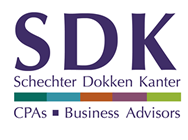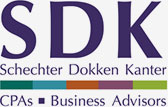SECURE Act 2.0 | A Review, Part 4
Self-Correction Program Changes
SECURE 2.0 contained provisions that expanded the Employee Plans Compliance Resolution System (EPCRS) which is used by plan sponsors to correct errors in qualified retirement plans. The IRS has recently released Notice 2023-43 which provides interim guidance on the expansion of EPCRS allowed by Secure 2.0.
The EPCRS program has three different sections: 1) The self-correction program (SCP) which allows plan sponsors to correct certain plan errors on their own without involving the IRS. 2) The Voluntary Correction Program (VCP) which involves correction of the error through filings with the IRS and payment of a fee. 3) The Audit Closing Agreement Plan (Audit CAP) which is the program that a plan must use to correct errors that are discovered during an IRS examination. We will be discussing the SCP exclusively in this article as this is what SECURE 2.0 updated and for which Notice 2023-43 has provided interim guidance.
Secure 2.0 permitted self-correction of any eligible inadvertent failures. An eligible inadvertent failure is a failure that occurs regardless of having procedures designed to uphold compliance. Eligible inadvertent failures do not include egregious errors, the misuse or diversion of plan assets, or any tax avoidance transactions that would be considered abusive. Secure 2.0 allows self-correction of these eligible failures if the correction is completed within a reasonable period after the error was identified, which removed the prior deadline for self-correction of errors. This allows many more plan failures to be corrected through the SCP, allowing for less expensive and easier correction for plan sponsors.
Notice 2023-43 allows plan sponsors to take advantage of the expanded SCP immediately to correct eligible inadvertent failures as long as they aren’t specifically disallowed under the notice. The notice includes 9 types of failures that are not eligible for self-correction. A few of the failures that are disallowed under the notice are:
- A failure to adopt an initial written plan document
- A significant failure in a terminated plan
- An operational failure being corrected by a plan amendment that reduces participant benefits
- A failure in a SEP or SIMPLE that does not use a model or prototype document
Eligible failures must be corrected within a reasonable time after discovery to qualify for self-correction. Failures found while under examination by the IRS will also not be eligible for self-correction, unless the plan sponsor has already demonstrated that self-correction was in process.
The notice didn’t impose any new recordkeeping requirements relating to self-correction, but it stressed the importance of the IRS requirements. Should the plan ever be under IRS examination the Plan Sponsor must be able to provide:
- Identification of the failure, the year(s) the failure occurred and the number of affected employees
- The date the failure was identified
- How the failure occurred, and a demonstration of practices and procedures designed to catch plan failures
- Identification and how it was corrected, including the date the correction was completed
- Changes to the practices and procedures to avoid a repeat plan failure
Overall, this is a welcome change in the retirement plan community. It permits many more self-correction options which helps save plan sponsors’ time and money. If you have any questions on these new provisions or if you believe you have a plan error that may need to be corrected, please contact Nicole Brown or Cole Hegstad and they will be happy to assist!


